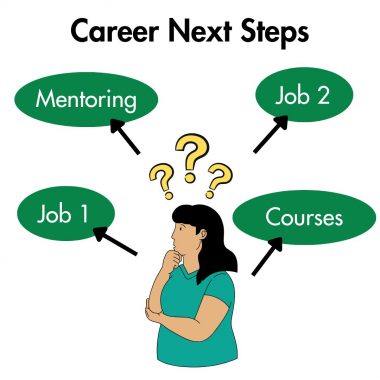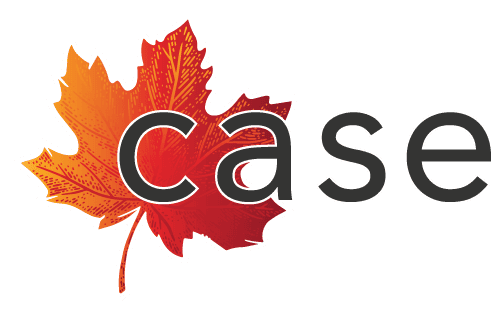After They Get the Job, What Comes Next?
After They Get the Job, What Comes Next?
Pour la version française de cet article, veuillez cliquer ici. | For the French version of this post, please click here.
For many of us, landing a job is just the first step. At any point in our employment journey, we might be nurturing a long-term career goal or envisioning next steps with our current position. As service providers and employers, it’s important to have conversations about “What comes next?” with all job seekers and workers, including those who experience disability.
Within organizations, discussions around progress, achievements, and goals help managers to learn from employees and to provide them with guidance and opportunities to build their knowledge and skills. Conversations on a regular basis boost employee engagement, and studies have shown a substantial relationship between engagement and performance/business outcomes.¹
Barriers to Conversations about Career Advancement

Job seekers and workers who experience disability may have had difficult or stressful conversations with employers around disclosure and accommodations in the past. When interactions around work accommodations prove challenging, workers who experience disability may hesitate to discuss other important aspects related to their job, such as career priorities or professional development.
In addition, as service providers and employers, we can sometimes unintentionally communicate our own expectations to job seekers/workers. Have we subconsciously projected our expectations for their next steps in their employment journey?
Frame the Employment Journey through Your Experience
While we don’t want to project our expectations, we can share our experiences to demonstrate what an employment journey can look like. Canadian workers have an average of seven different employers during their lifetime.² Many of us have had winding career paths that were anything but linear.
Think about your past jobs and how you got to where you are today.
- Are there nuggets of information that would be helpful to share with job seekers/workers?
- What did you like about each job or advancement opportunity, and why?
- How did that information influence your next step?
Have Conversations about Career Progression
Four of the 12 “engagement conditions” that have been shown to boost employee engagement include:
- having the materials and equipment needed to do the job,
- someone at work encouraging employee development,
- talking about employee progress, and
- opportunities at work to learn and grow.¹
Service Providers
Have a conversation with every job seeker/worker to put career progression on their radar.
- What is their dream? What are their short-term and long-term goals?
- What advancement supports are available in the workplace they’re currently in or are considering?
Employers
Check in with workers during regularly scheduled, and even unscheduled, conversations. For scheduled conversations, provide questions ahead of time to give employees time to consider them, such as:
- Do they have the equipment/materials needed to do their job?
- What do they love about their job?
- Where do they see themselves in one year/a few years?
- Provide an overview of the professional development or mentoring opportunities at your organization.
Reverse Engineer an Employment Path
Once you know the job seeker/worker’s goals, you can work together to “reverse engineer” a path to achieving them.
- What steps could be taken to reach each goal?
- What kind of timeline is involved?
- What role can you or the organization play in supporting each step?
Next steps can include:
- a certain position or career
- a specific department or organization
- more or different responsibilities
- mentorship
- updating existing or gaining new skills
- management training
Understand the Supports You Can Offer
Service Providers
- Consider the services you currently offer and how a job seeker or worker could access support around career progression.
- Do you promote services around career progression to workers who already have jobs?
Employers
- What supports do you offer around career advancement?
- Are these discussed during employee performance reviews/evaluations?
- Do you offer guidance to employees on next steps they could take?
One of the biggest hurdles is getting service providers, employers, and workers into the mindset of thinking about and considering career progression. If we have more conversations about it, we’ll be able to keep it top of mind to support all workers as they move forward in their employment journey.
References
1. Gallup. The Relationship Between Engagement at Work and Organizational Outcomes Q12® Meta-Analysis: 11th Edition. May 2024.
2. Statistics Canada. Study: A 30-year look at the work histories of Canadian workers. Released December 9, 2021. (Archived Content)

